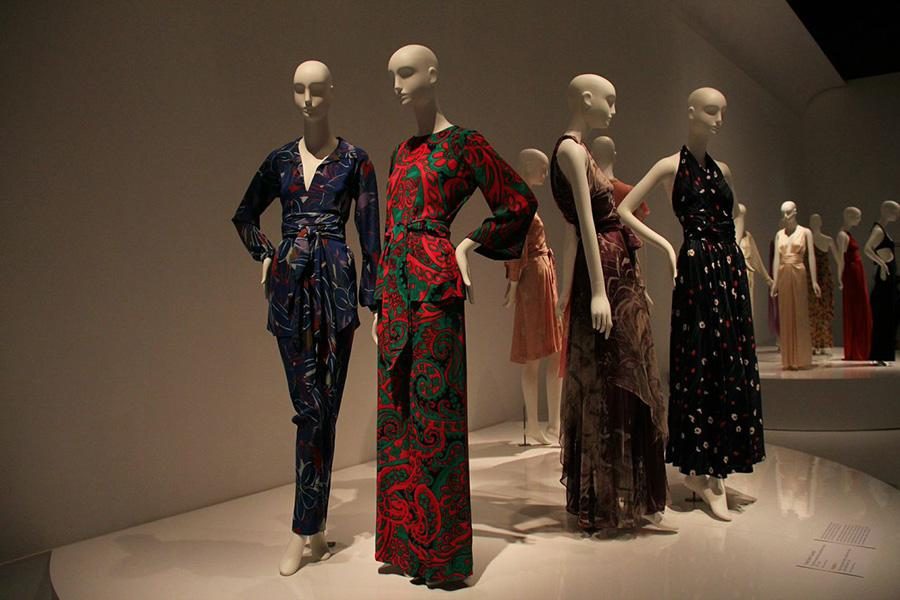Designers Yves Saint Laurent, Halston showcased in FIT exhibit
February 10, 2015
Androgynous ensembles, shorter hemlines and loose, flowing silhouettes: these looks defined 1970s fashion, thanks to the influence of designers Yves Saint Laurent and Roy Halston Frowick. The newest exhibition at the Museum at the Fashion Institute of Technology, “Yves Saint Laurent + Halston: Fashioning the 70s,” explores the decade when these two designers ruled the fashion world, using their distinct visions and techniques to transform fashion simultaneously.
The exhibit, which opened Friday, is the first of its kind to feature the looks of Yves Saint Laurent and Halston together. Deputy director Patricia Mears and assistant curator Emma McClendon explore the decade while highlighting the similarities and diffencesbetween the French and American designers.
Before entering the exhibit, visitors encounter a timeline that outlines the designers’ careers, beginning in the 1950s and ending in 1984, the year Halston was forced to step down from his enterprise and Diana Vreeland curated a retrospective at the Metropolitan Museum of Art for Saint Laurent. The timeline prepares viewers for the exhibit, as it shows off rare photos of the designers and shows the rises and falls of the companies.
As museum patrons enter the dimly lit main room of the exhibit, classic disco songs like “Boogie Wonderland” and “Freak Out” play. The room is white and glossy so that the reflections of sparkly sequined gowns bounce off the walls. Some designs are behind glass in front of silver chain curtains, while others are displayed on round stage-like podiums, fit for the Studio 54 soundtrack.
The exhibition focuses on themes the designers examined: menswear, exoticism and historicism. In terms of menswear, Saint Laurent explored different kinds of pantsuits, such as his “Le smoking” women’s tuxedo or a “gangster” pinstripe suit. Meanwhile, Halston created one of his most famous creations, the Ultrasuede shirtdress, combining femininity with the ease and simplicity of menswear. Both designers were influenced by the fashions of other cultures from the past. Saint Laurent devoted entire collections to Russian and Chinese inspired looks that he knew would be recognizable to Western audiences. He was also inspired by La Belle Epoque and interwar years, demonstrated with his use of full skirts and gigot sleeves. Halston was more interested in adapting exotic or historical concepts in subtle ways, mostly through construction. He created a sarong dress made from one piece of fabric that he skillfully draped around the body.
As the exhibit explores the culture of the ’70s and the customs of two legendary designers, visitors are able to make their own conclusions about the designs. Conversations about whose look was better executed or how similar two looks appear to be can be heard around the room. Placing two legendary designers side by side allows visitors to look at the ’70s in a whole new way. They can learn how the culture of the era came to be, what made it so distinctive and why this style still makes appearances on today’s runways.
A version of this article appeared in the Wednesday, Feb. 11 print edition. Email Natalia Barr at [email protected]























































































































































